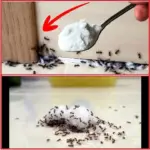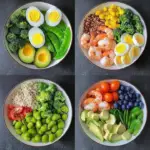Age spots, also known as liver spots or sunspots, are a common skin concern associated with aging. These small, dark patches typically develop due to prolonged sun exposure and oxidative stress. While they are harmless, age spots can affect your skin’s appearance and contribute to premature aging. One lesser-known but essential element in preventing age spots is selenium, a trace mineral with powerful antioxidant properties.
This article delves into what selenium is, how it protects the skin, and its specific role in combating age spots.

What Is Selenium, and Why Is It Essential for Skin Health?
Selenium is a vital trace mineral that contributes to numerous bodily functions, including skin health. As a potent antioxidant, selenium neutralizes free radicals—unstable molecules that cause cellular damage and accelerate aging. Its antioxidant properties are essential for maintaining youthful, healthy skin.
Additionally, selenium plays a role in:
- Immune Function: A robust immune system promotes faster skin repair and renewal.
- Thyroid Hormone Metabolism: Proper thyroid function ensures hormonal balance, which indirectly supports skin vitality.
How Selenium Deficiency Contributes to Age Spots
When selenium levels in the body are inadequate, oxidative stress increases. This imbalance allows free radicals to damage skin cells, leading to signs of aging, including age spots.
Key Connections Between Selenium Deficiency and Age Spots:
- UV Sensitivity: Selenium deficiency leaves the skin more vulnerable to UV rays, which stimulate excess melanin production and cause pigmentation irregularities.
- Accelerated Skin Aging: Without selenium, the skin’s ability to repair itself diminishes, exacerbating damage caused by environmental stressors.
- Weakened Antioxidant Defense: Selenium’s absence limits the body’s ability to counteract oxidative stress, increasing the likelihood of age spots.
Maintaining adequate selenium levels is crucial for reducing these risks and fostering healthier, more radiant skin.
Selenium’s Proven Benefits for Skin Protection
Scientific studies have demonstrated the significant role selenium plays in skin health, particularly in protecting against UV-induced damage and oxidative stress. Here’s how selenium works to prevent age spots and other skin issues:
- Preserves Skin Elasticity
Selenium helps maintain the structural proteins in the skin, such as collagen and elastin. By reducing the breakdown of these proteins, selenium combats skin sagging and promotes a firmer, youthful complexion. - Minimizes Pigmentation Irregularities
Selenium combats oxidative stress, a leading cause of uneven pigmentation. By reducing free radical damage, selenium helps prevent the development of age spots and other dark patches. - Provides UV Protection
Selenium, often in synergy with other antioxidants like vitamin E, shields the skin from UV-induced damage. This reduces the risk of photoaging and pigmentation disorders. - Offers Anti-Cancer Properties
Selenium’s powerful antioxidant effects may also protect the skin against carcinogenesis, reducing the risk of skin cancer caused by prolonged sun exposure.
Recognizing Symptoms of Selenium Deficiency
Selenium deficiency can manifest through various symptoms, including:
- Fatigue and weakened immunity
- Dry, flaky, or damaged skin
- Hair loss and brittle nails
- Increased susceptibility to oxidative stress
If you notice signs of premature skin aging or increased pigmentation, selenium deficiency might be a contributing factor.
How to Boost Selenium Levels for Healthy Skin
Incorporating selenium-rich foods into your diet is a natural way to maintain optimal selenium levels and promote skin health.
Selenium-Rich Foods:
- Brazil Nuts: A single Brazil nut provides more than the daily recommended intake of selenium.
- Seafood: Tuna, sardines, and shrimp are excellent sources.
- Meat and Poultry: Chicken, turkey, and beef contain significant amounts of selenium.
- Eggs: A convenient source of selenium for vegetarians.
- Whole Grains and Seeds: Sunflower seeds and brown rice are selenium-rich plant-based options.
Supplements:
If dietary intake is insufficient, selenium supplements can be a convenient alternative. Consult a healthcare provider to determine the right dosage for your needs.
Preventing Age Spots: Lifestyle Tips
In addition to maintaining adequate selenium levels, consider the following steps to prevent age spots:
- Use Sunscreen Daily: Protect your skin from harmful UV rays with a broad-spectrum sunscreen.
- Hydrate and Moisturize: Keep your skin hydrated to improve elasticity and minimize damage.
- Follow an Antioxidant-Rich Diet: Include foods rich in vitamin C, vitamin E, and beta-carotene for additional skin protection.
- Avoid Smoking: Smoking depletes antioxidants in the body and accelerates skin aging.
Conclusion
Age spots are a visible sign of skin damage and aging, but they don’t have to be inevitable. Selenium, a powerful antioxidant, offers a natural way to combat the root causes of pigmentation irregularities and maintain vibrant, youthful skin. By incorporating selenium-rich foods into your diet and following a comprehensive skincare routine, you can protect your skin from oxidative stress and UV damage.
Invest in your skin’s health today, and let the glow speak for itself!












